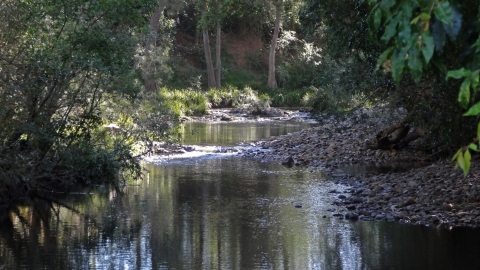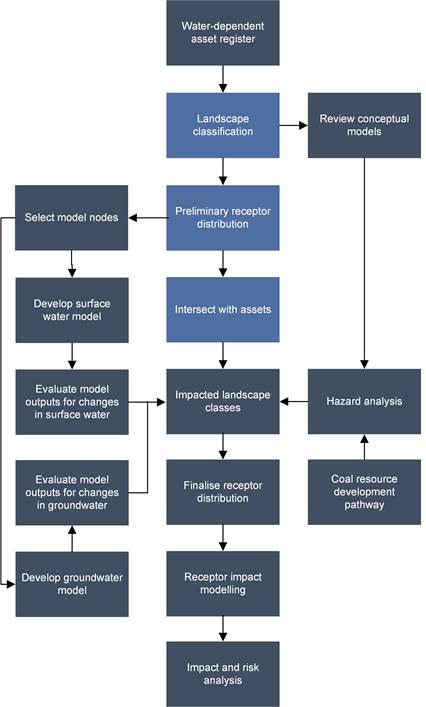- Home
- Assessments
- Bioregional Assessment Program
- Methods
- Assigning receptors to water-dependent assets
- 3 Assigning receptors
- 3.1 Overview of process for assigning receptors
The process for assigning receptors for a bioregional assessment (BA) is summarised in Figure 8.
Assigning receptors is a critical point of engagement within the Assessment team. The selection of receptors and development of the receptor register requires consultation and input from ecologists, hydrologists and hydrogeologists, risk experts and those with domain and local expertise. Some of the processes may occur in parallel; hydrologists can be developing surface water and groundwater models at the same time as ecologists are developing the landscape classification and reviewing the detailed conceptual models. However, even in this situation there needs to be constant interactions within Assessment teams. For example, groundwater‑dependent assets such as bores or groundwater-dependent ecosystems (GDEs) may need to be explicitly built into the groundwater model. Simultaneously, key hazards associated with the coal resource development pathway (CRDP) can be documented and used as input into the selection of appropriate receptors.
The target requirement is for receptor coverage that enables the analysis of impacts on the assets listed in the water-dependent asset register (product 1.3; see Table 2 for BA product details). Input from initial hydrological modelling will be critical in helping to scope the extent and magnitude of expected hydrological responses and to focus the effort for subsequent receptor impact modelling and impact and risk analysis. Furthermore, the uncertainty analysis associated with surface water and groundwater models requires that the hydrological response variables (or derived metrics) are identified prior to the development of the model emulators (described in the companion submethodology M09 (as listed in Table 1) for propagating uncertainty through models (Peeters et al., 2016)). An outcome of this is that the number of receptors for which model emulators will be built (model nodes) will be a subset of the total number of receptors required for complete representation of the assets as the number of model nodes needs to be balanced across the number of hydrological response variables, receptor locations and assessment periods. Resolution of this trade-off requires a number of iterations during the assignment of receptors. In some cases, the model nodes might not coincide with receptor locations. In these cases, hydrological changes will be interpolated to receptor locations for use in subsequent receptor impact modelling and impact and risk analysis. It is important that all decisions taken during this period are documented and justified.
In short, the receptors may be best allocated in a two-stage process, with a preliminary distribution across the landscape and then a refinement of that distribution as more information becomes available (Chapter 0). The refinement should include input from internal and external experts.

METHODOLOGY FINALISATION DATE
- 1 Background and context
- 2 Defining receptors
- 3 Assigning receptors
- 3.1 Overview of process for assigning receptors
- 3.2 Landscape classification
- 3.3 Process for assigning receptors across the landscape
- 4 Developing a receptor register
- References
- Datasets
- Glossary
- Citation
- Acknowledgements
- Contributors to the Technical Programme
- About this submethodology

